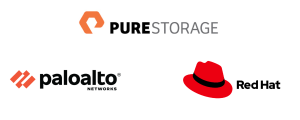People entering the government IT workforce now have different expectations than their older colleagues, and that needs to be reflected in how agencies define those jobs, said one state chief information officer.
In the past, many government employees were looking for a pension, which meant they would be around for 20 or 30 years. That’s not how this generation of the IT workforce thinks, said Jason Clarke, CIO for Delaware, speaking at a recent GovLoop virtual event.
“If they really have a lot of drive to go to the next level, two to three years is all they’re looking for, and then they want to take that skill set and move on,” he said. “And so, we have to adapt.”
Clarke highlighted three ways that agencies can improve their ability to recruit and retain IT talent.
Rethink Job Descriptions
Traditionally, IT departments have used general titles, such as Computer Operator 1 or Support Specialist, but those kinds of titles don’t capture the essence of the work.
That’s a problem when it comes to recruiting, Clarke said. “If you put that out on LinkedIn or any other recruitment sites, it just gets glazed over, or it doesn’t even appear in search.”
It’s not just a matter of appearances. The IT field has become increasingly specialized, and agencies need to be specific about what kind of subject matter experts they need, he said.
At the same time, agencies need to rethink how they structure their work. When people stuck around for 20 or 30 years, they ended up wearing multiple hats. As those people leave, agencies are not going to find people ready to step into those roles, Clarke said.
Instead, they need to break down their work into smaller chunks, providing more clearly defined positions, he said.
Standardize Then Automate
Yes, an agency can use automation to free their IT staff from mundane work and allow them to focus on higher-value, more fulfilling work. But you can’t rush into it.
The problem is that, over the years, agencies have adopted IT solutions on an as-needed basis, which has resulted in a wide range of technologies and processes, each tailored to a specific requirement, Clarke said. “We created a lot of snowflakes in that process.”
Recently, many state and local governments have been working toward centralizing IT management, rather than leaving it to individual agencies. That’s a good first step, but often the IT departments just end up inheriting those snowflakes, he said.
You can’t get the full benefits of automation if every system or process requires its own tool. That’s why it’s important to standardize the IT environment as much as possible, then bring in a common set of automation tools. That’s when the efficiency really kicks in.
“It takes work to implement, but I look at it as you either pay now, or your pay more later,” Clarke said.
Connect IT Staff to Mission
Many people join the government workforce – and stay in government – because they are drawn to public service or to the mission of a given agency. But that connection to mission can get lost for people working behind the scenes in IT, Clarke said.
This is especially true for newer employees, who might be experts in a particular technology but don’t understand how integral that technology is to the work of the agency, he said.
For example, Delaware’s Department of Technology and Information provides critical services to the state’s law enforcement community. DTI essentially serves as the internet service provider, managing the network and hosting core applications.
In this way, “we all play a role in keeping the officers and the public informed with these tools,” Clarke said.
“We need to make sure that we’re putting in the effort to connect employees back to what they do,” he said.
Sponsored by:






Leave a Reply
You must be logged in to post a comment.